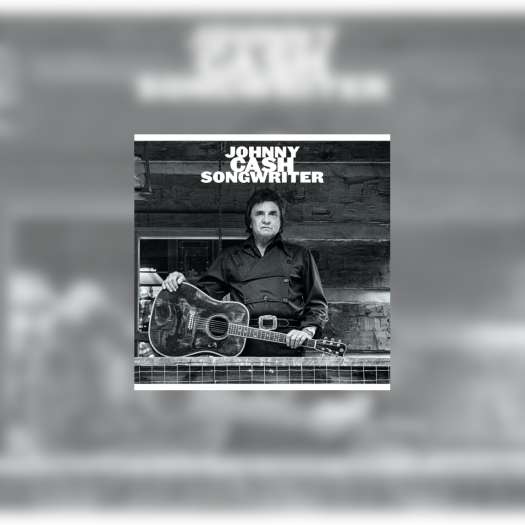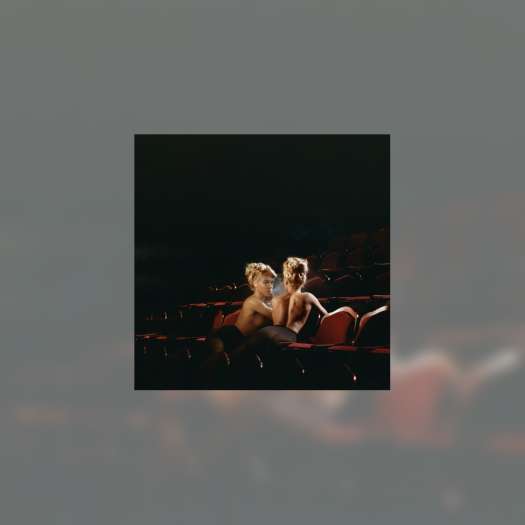Few would argue over the critical influence and lasting legacy of De La Soul's 1989 debut 3 Feet High and Rising. Taking advantage of hip-hop's sonic dependence on James Brown, it happily mined unfettered musical territory for the genre, forever broadening its sonic palette. Its smart cohesion also represented the birth of skits on hip-hop records, and elevated sampling's recontextualising practice to a higher level of sophistication. Given the sheer volume of samples used on the record, with the accompanying legal and cost considerations, and hip-hop's callow sampling experiences at the time of its release, the effect of the record will likely never be repeated. But with the presence of decidedly more confrontational fare in the seminal form of Public Enemy and NWA, De La Soul on were mislabelled as alternative and reaction to the group's material since their ingenious decision to off themselves has been unjustifiably indifferent. Rather than being whatever alternative hip-hop is, De La Soul's music is strongly connected to hip-hop's roots. The Native Tongues crew, of whom De La Soul became an integral part was modelled on pioneer Afrika Bambaataa's Zulu Nation. Bambaataa himself was known for his eclectic selections that spanned several music genres at his jams and earned him the title "Master of Records." With their own pastiches of disparate artists, constant reinvention and their countless allusions to hip-hop from the past, De La Soul's material should be judged against hip-hop culture's founding principles. Their respect for the foundation explains why De La Soul have always critiqued the foibles of rap music through their multi-layered lyrics, too-convincing parodies and trademark skits; a trait continued on their latest, Art Official Intelligence: Mosaic Thump, indicating a passion that emanates, appropriately enough, from the soul.
1985
At Amityville Memorial High, in suburban Amityville, New York, casual acquaintances Kelvin "Posdnous" Mercer, Dave "Trugoy The Dove" Jolicoeur and Vincent "P.A. Pasemaster Mase" Mason become firm friends at summer school. Jolicouer's stage name originates from the name of his favourite food, yogurt, spelt backwards while the reverse spelling of Mercer's moniker, "Sound Sop," refers to the name of his first DJ crew. They start to make music at Mase's house and form Daisy Productions, a name chosen after they see a T-shirt with Minnie Mouse holding a daisy in a department store. Trugoy makes the word daisy into an acronym; (DA Inner Sound Y'All), to reflect the group's modus operandi.
1987
As a DJ for an artist on his high school music teacher's label, Mase is present when Paul Huston, better known as Prince Paul, DJ for well-respected group Stetsasonic, drops by to program a beat for the instructor. Huston, who had been DJing since Grade 5, had attended the same school as the three friends and introduced himself while they swept floors as janitors at a local flea market. After taking up Mase's offer to listen to rough tracks by his group De La Soul, Prince Paul is impressed and puts up money along with the trio to re-record De La Soul's eventual debut single "Plug Tunin'," and two other tracks at a professional studio. Prince Paul gives the three-track demo to Stetsasonic MC Daddy-O, leading to its circulation amongst industry insiders.
1988
The immediate interest in De La Soul's demo leads them to sign with Tommy Boy, favouring creative control over the more lucrative deals on the table, and they begin work on their first album. Prince Paul takes on the album's production with assistance from the trio and writes out homework assignments for the teenagers, ensuring they have lyrics completed for the next studio session. The album's music is raided from the record collections of friends, family and record stores and its decidedly unorthodox bent is underlined by the album title being taken from an allusion to a Johnny Cash song they sample on "The Magic Number." After they finish the recording sessions for 3 Feet High And Rising, Prince Paul feels that zany game show skits would provide a unifying element to the album and convey the group members' personalities to listeners. After six weeks, the group hands in the album, recorded on an $11,000 budget, but are sent back to the studio to record "Me Myself & I," the album's big hit single, ironically enough because the label feels there are few potential singles on the album.

1989
De La Soul's eclectic sounds, abstract rhyming and goofy brand of humour spurs 3 Feet High and Rising to critical and commercial success. Acclaimed for its innovation, the album strikes a chord with a wide demographic audience with samples from the likes of Steely Dan & Hall & Oates. Consumers actually cut out the proof of purchases on the record sleeve and try to answer the inane game show questions (e.g., "How many fibres are intertwined in a Shredded Wheat biscuit?") and send them to the Tommy Boy offices, but apparently no one has the right answers. 3 Feet High & Rising also brings widespread attention to the collective known as the Native Tongues, who espouse Afrocentricity and positivity. While doing a show in Boston, De La Soul meet the Jungle Brothers and through them met Q-Tip of A Tribe Called Quest. These three groups form the core of the Native Tongues and guest frequently on each other's records over the next few years. Other members include Queen Latifah and transplanted British MC Monie Love. All of these artists appear on the remix to 3 Feet High and Rising's "Buddy," which becomes the definitive Native Tongues recording.
1990
While De La Soul's debut went platinum, the group faces a legal obstacle that affects hip-hop as a whole. The Turtles, a 60s group who had a hit with the song "You Showed Me," sues De La Soul for the unauthorised use of the song on 3 Feet High & Rising's "Transmitting Live From Mars" interlude where it serves as the background to dialogue snippets from a French instructional record. The Turtles eventually win an out-of-court settlement and the decision means that samples have to be legally cleared before an album can be released. Many albums, including De La Soul's own sophomore effort, are delayed due to the decision. Meanwhile, the lasting influence of De La Soul's debut makes any artist fair game for sampling, precipitating the emergence of like-minded groups like Arrested Development & PM Dawn. Despite their success, the group resents the neo-hippie tag pinned on them; they decide to take drastic measures.
1991
The release of De La Soul is Dead befuddles critics and alienates bandwagon-jumping fans. With its cover of a cracked flowerpot containing shrivelled up flowers, it's clear that the "Daisy" age is over. The album's cynical and bitter tone rubbed people expecting a sequel to 3 Feet High & Rising the wrong way. Although roundly savaged by critics, De La cleverly beats them to the punch, anticipating the negative feedback. In their now-trademark skits, a cassette of the album is found in the garbage and characters relentlessly diss the album as it plays, eventually throwing it back in the trash. While containing dark and harrowing content dealing with incest and drug addiction, this misunderstood and compelling album also contains levity in the form of body-rocking roller-skating jams, a hilarious three-part suite dedicated to bad service in a fast food outlet and countless references to donuts. This motif is not as frivolous as it seems ? the group had ill-fated plans to open up a donut store and the original title of their sophomore effort was We Fell Into A Bottle of Plastic Shwingalokate So We Opened Up A Donut Shop.

1993
After the radical overhaul of their second record, De La Soul returns with their most musically subdued effort Buhloone Mindstate. "It might blow up but it won't go pop," is the maxim; by now, the group is acutely aware of, and perhaps resigned to their outsider status. Due in no small part to the sonic adventures of A Tribe Called Quest, hip-hop artists are exploring jazz and De La Soul push things further with the accompaniment of Maceo Parker and other members of James Brown's band. The group's underrated lyrical creativity yields "Ego Trippin(Part 2)," a song made up almost entirely of lyrics from other songs from the hip-hop canon, and retain their penchant for the unexpected with an appearance by Japanese rap artists SDP and Takagi Kan. Despite the melodic sound of the album, there is some particularly acid-tongued lyrical content over the dissolution of the Native Tongues. Tensions among the collective about groups asserting their own identities leaves Posdnous acrimonious and the constant snipes come to a head on the album's centrepiece "I Am I Be," arguably De La Soul's most eloquent and honest recording.
1994
Tommy Boy releases Clearlake Audiotorium, a limited edition promo EP featuring unreleased tracks and songs from Buhloone Mindstate pressed on translucent vinyl. Only 500 copies are pressed, but the EP is later bootlegged.
1995
After starting pre-production on their fourth album, De La Soul decide that Prince Paul's ideas won't match the group's desired approach and that he will not produce their next project. The trio had gradually taken the production reigns, something Prince Paul had been urging the group to do since their second LP. Prince Paul, at this time involved with Wu-Tang Clan's RZA in the Gravediggaz, instead commences work on a solo project Psychoanalysis -What Is It?, intending it to be his farewell.
1996
The title of their fourth album, Stakes Is High, refers not only to personal pressures (sales had decreased with every release), but the feeling that the essence of hip-hop culture was seriously endangered. The group tones down their metaphor-laden lyrics for a more direct approach, and the absence of Prince Paul is reflected in the stripped-down rhythms and sober mood. While content in the past to lampoon aspects of rap they wished to criticise, they now take on a morbidly serious tone, bluntly crystallised in the hectic brilliance of the title track, where Posdnous declares the "Native Tongues have officially been reinstated." The collective now has new associates such as Mos Def, who makes his first high-profile appearance on this album.
1997 to 1999
The Native Tongue revival is very short-lived. A song with all original members appears on the Jungle Brothers 1997 album Raw Deluxe, but nothing else, despite the fact both De La Soul and Jungle Brothers appear on the Propellerheads' Decksandrumsandrockandroll. De La Soul keep a relatively low profile, spending time with their families and occasionally appear on records by Common, Camp Lo and various soundtracks. In 1999, the group starts to ease their way back into hip-hop consciousness by reuniting with a revitalised Prince Paul. De La Soul are featured in his audio movie A Prince Among Thieves, cast as drug addicts, and Trugoy, now simply known by his birth name Dave, appears on Prince Paul's Handsome Boy Modeling School. Maseo keeps busy developing artists and releasing singles on his Bear Mountain Records imprint.
2000
The group contributes tracks and executive produces a compilation for Tommy Boy entitled Hip Hop 101 and agree to work on a compilation of Japanese hip-hop. They continue the cameo appearances on releases by Black Eyed Peas, Tony Touch, Nightmares On Wax and Reflection Eternal, and Posdnous appears on the Hip Hop 4 Respect EP, organised by Mos Def & Talib Kweli. The group is also headlining the Spit Kicker tour ahead of the release of their fifth album. Art Official Intelligence was planned as a triple CD, and was initially a joke riffing on the flood of mediocre rap double CDs on the market, but has eventually become an artistic challenge to the group. The first volume, subtitled Mosaic Thump finds the group in a looser, more jovial mood than Stakes Is High and builds on the sound of their 1996 effort, showing genuine chemistry with numerous guest artists in tow. The record is probably their most accessible since their debut, yet retains their characteristic nature and reverence for the music's foundation. The second and third volume of the three-CD set, tentatively to include collaborations with artists as dissimilar as Sinead O' Connor and Pete Rock, will signify the end of their Tommy Boy contract and are due to drop before the summer of 2001.
1985
At Amityville Memorial High, in suburban Amityville, New York, casual acquaintances Kelvin "Posdnous" Mercer, Dave "Trugoy The Dove" Jolicoeur and Vincent "P.A. Pasemaster Mase" Mason become firm friends at summer school. Jolicouer's stage name originates from the name of his favourite food, yogurt, spelt backwards while the reverse spelling of Mercer's moniker, "Sound Sop," refers to the name of his first DJ crew. They start to make music at Mase's house and form Daisy Productions, a name chosen after they see a T-shirt with Minnie Mouse holding a daisy in a department store. Trugoy makes the word daisy into an acronym; (DA Inner Sound Y'All), to reflect the group's modus operandi.
1987
As a DJ for an artist on his high school music teacher's label, Mase is present when Paul Huston, better known as Prince Paul, DJ for well-respected group Stetsasonic, drops by to program a beat for the instructor. Huston, who had been DJing since Grade 5, had attended the same school as the three friends and introduced himself while they swept floors as janitors at a local flea market. After taking up Mase's offer to listen to rough tracks by his group De La Soul, Prince Paul is impressed and puts up money along with the trio to re-record De La Soul's eventual debut single "Plug Tunin'," and two other tracks at a professional studio. Prince Paul gives the three-track demo to Stetsasonic MC Daddy-O, leading to its circulation amongst industry insiders.
1988
The immediate interest in De La Soul's demo leads them to sign with Tommy Boy, favouring creative control over the more lucrative deals on the table, and they begin work on their first album. Prince Paul takes on the album's production with assistance from the trio and writes out homework assignments for the teenagers, ensuring they have lyrics completed for the next studio session. The album's music is raided from the record collections of friends, family and record stores and its decidedly unorthodox bent is underlined by the album title being taken from an allusion to a Johnny Cash song they sample on "The Magic Number." After they finish the recording sessions for 3 Feet High And Rising, Prince Paul feels that zany game show skits would provide a unifying element to the album and convey the group members' personalities to listeners. After six weeks, the group hands in the album, recorded on an $11,000 budget, but are sent back to the studio to record "Me Myself & I," the album's big hit single, ironically enough because the label feels there are few potential singles on the album.

1989
De La Soul's eclectic sounds, abstract rhyming and goofy brand of humour spurs 3 Feet High and Rising to critical and commercial success. Acclaimed for its innovation, the album strikes a chord with a wide demographic audience with samples from the likes of Steely Dan & Hall & Oates. Consumers actually cut out the proof of purchases on the record sleeve and try to answer the inane game show questions (e.g., "How many fibres are intertwined in a Shredded Wheat biscuit?") and send them to the Tommy Boy offices, but apparently no one has the right answers. 3 Feet High & Rising also brings widespread attention to the collective known as the Native Tongues, who espouse Afrocentricity and positivity. While doing a show in Boston, De La Soul meet the Jungle Brothers and through them met Q-Tip of A Tribe Called Quest. These three groups form the core of the Native Tongues and guest frequently on each other's records over the next few years. Other members include Queen Latifah and transplanted British MC Monie Love. All of these artists appear on the remix to 3 Feet High and Rising's "Buddy," which becomes the definitive Native Tongues recording.
1990
While De La Soul's debut went platinum, the group faces a legal obstacle that affects hip-hop as a whole. The Turtles, a 60s group who had a hit with the song "You Showed Me," sues De La Soul for the unauthorised use of the song on 3 Feet High & Rising's "Transmitting Live From Mars" interlude where it serves as the background to dialogue snippets from a French instructional record. The Turtles eventually win an out-of-court settlement and the decision means that samples have to be legally cleared before an album can be released. Many albums, including De La Soul's own sophomore effort, are delayed due to the decision. Meanwhile, the lasting influence of De La Soul's debut makes any artist fair game for sampling, precipitating the emergence of like-minded groups like Arrested Development & PM Dawn. Despite their success, the group resents the neo-hippie tag pinned on them; they decide to take drastic measures.
1991
The release of De La Soul is Dead befuddles critics and alienates bandwagon-jumping fans. With its cover of a cracked flowerpot containing shrivelled up flowers, it's clear that the "Daisy" age is over. The album's cynical and bitter tone rubbed people expecting a sequel to 3 Feet High & Rising the wrong way. Although roundly savaged by critics, De La cleverly beats them to the punch, anticipating the negative feedback. In their now-trademark skits, a cassette of the album is found in the garbage and characters relentlessly diss the album as it plays, eventually throwing it back in the trash. While containing dark and harrowing content dealing with incest and drug addiction, this misunderstood and compelling album also contains levity in the form of body-rocking roller-skating jams, a hilarious three-part suite dedicated to bad service in a fast food outlet and countless references to donuts. This motif is not as frivolous as it seems ? the group had ill-fated plans to open up a donut store and the original title of their sophomore effort was We Fell Into A Bottle of Plastic Shwingalokate So We Opened Up A Donut Shop.

1993
After the radical overhaul of their second record, De La Soul returns with their most musically subdued effort Buhloone Mindstate. "It might blow up but it won't go pop," is the maxim; by now, the group is acutely aware of, and perhaps resigned to their outsider status. Due in no small part to the sonic adventures of A Tribe Called Quest, hip-hop artists are exploring jazz and De La Soul push things further with the accompaniment of Maceo Parker and other members of James Brown's band. The group's underrated lyrical creativity yields "Ego Trippin(Part 2)," a song made up almost entirely of lyrics from other songs from the hip-hop canon, and retain their penchant for the unexpected with an appearance by Japanese rap artists SDP and Takagi Kan. Despite the melodic sound of the album, there is some particularly acid-tongued lyrical content over the dissolution of the Native Tongues. Tensions among the collective about groups asserting their own identities leaves Posdnous acrimonious and the constant snipes come to a head on the album's centrepiece "I Am I Be," arguably De La Soul's most eloquent and honest recording.
1994
Tommy Boy releases Clearlake Audiotorium, a limited edition promo EP featuring unreleased tracks and songs from Buhloone Mindstate pressed on translucent vinyl. Only 500 copies are pressed, but the EP is later bootlegged.
1995
After starting pre-production on their fourth album, De La Soul decide that Prince Paul's ideas won't match the group's desired approach and that he will not produce their next project. The trio had gradually taken the production reigns, something Prince Paul had been urging the group to do since their second LP. Prince Paul, at this time involved with Wu-Tang Clan's RZA in the Gravediggaz, instead commences work on a solo project Psychoanalysis -What Is It?, intending it to be his farewell.
1996
The title of their fourth album, Stakes Is High, refers not only to personal pressures (sales had decreased with every release), but the feeling that the essence of hip-hop culture was seriously endangered. The group tones down their metaphor-laden lyrics for a more direct approach, and the absence of Prince Paul is reflected in the stripped-down rhythms and sober mood. While content in the past to lampoon aspects of rap they wished to criticise, they now take on a morbidly serious tone, bluntly crystallised in the hectic brilliance of the title track, where Posdnous declares the "Native Tongues have officially been reinstated." The collective now has new associates such as Mos Def, who makes his first high-profile appearance on this album.
1997 to 1999
The Native Tongue revival is very short-lived. A song with all original members appears on the Jungle Brothers 1997 album Raw Deluxe, but nothing else, despite the fact both De La Soul and Jungle Brothers appear on the Propellerheads' Decksandrumsandrockandroll. De La Soul keep a relatively low profile, spending time with their families and occasionally appear on records by Common, Camp Lo and various soundtracks. In 1999, the group starts to ease their way back into hip-hop consciousness by reuniting with a revitalised Prince Paul. De La Soul are featured in his audio movie A Prince Among Thieves, cast as drug addicts, and Trugoy, now simply known by his birth name Dave, appears on Prince Paul's Handsome Boy Modeling School. Maseo keeps busy developing artists and releasing singles on his Bear Mountain Records imprint.
2000
The group contributes tracks and executive produces a compilation for Tommy Boy entitled Hip Hop 101 and agree to work on a compilation of Japanese hip-hop. They continue the cameo appearances on releases by Black Eyed Peas, Tony Touch, Nightmares On Wax and Reflection Eternal, and Posdnous appears on the Hip Hop 4 Respect EP, organised by Mos Def & Talib Kweli. The group is also headlining the Spit Kicker tour ahead of the release of their fifth album. Art Official Intelligence was planned as a triple CD, and was initially a joke riffing on the flood of mediocre rap double CDs on the market, but has eventually become an artistic challenge to the group. The first volume, subtitled Mosaic Thump finds the group in a looser, more jovial mood than Stakes Is High and builds on the sound of their 1996 effort, showing genuine chemistry with numerous guest artists in tow. The record is probably their most accessible since their debut, yet retains their characteristic nature and reverence for the music's foundation. The second and third volume of the three-CD set, tentatively to include collaborations with artists as dissimilar as Sinead O' Connor and Pete Rock, will signify the end of their Tommy Boy contract and are due to drop before the summer of 2001.




